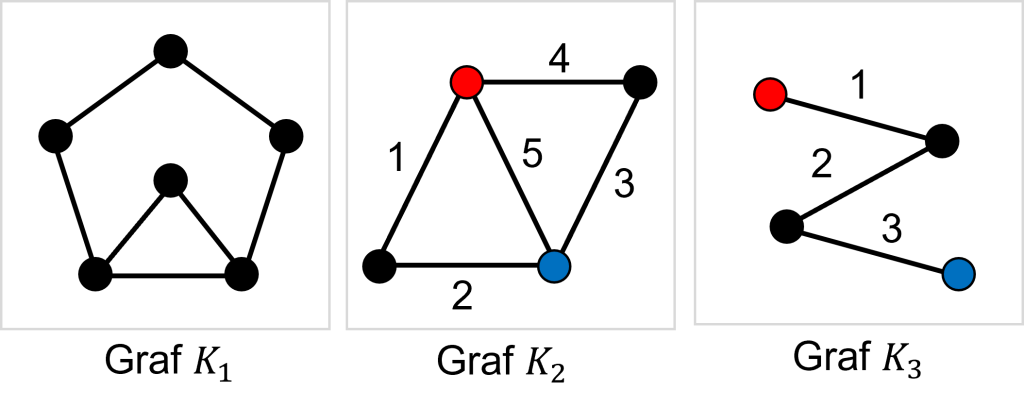 Illustration of Graph (Photo: mathcyber1997.com
Illustration of Graph (Photo: mathcyber1997.com
Graphs are one of the fundamental concepts in mathematics and computer science that represent relationships between objects. The structure of a graph consists of vertices (nodes) and edges that connect these vertices. With its ability to model various types of relationships and interactions, graphs have become an invaluable tool in many fields, ranging from mathematics and computer science to biology and social sciences.
The concept of graphs has existed since the 18th century, when Swiss mathematician Leonhard Euler solved the problem of the Königsberg bridges. This problem involved finding a route that would allow a person to walk through all the bridges in the city of Königsberg without repeating any route. From this study, Euler established the foundation for graph theory, which has now become an important branch of mathematics (Diestel, 2017).
Graphs can be classified into several types based on their properties and structures. One type is the undirected graph, where the edges have no direction, making the relationship between the vertices bidirectional. An example is social networks, where relationships between individuals can occur in both directions. On the other hand, directed graphs have edges that indicate direction, depicting one-way relationships between vertices, such as in the representation of websites and hyperlinks (Cormen et al., 2009).
The applications of graphs are vast and cover various fields. In computer science, graphs are used to solve problems such as finding the shortest path, scheduling, and network processing. Dijkstra’s and A* algorithms are examples of algorithms used to find the shortest path in a graph. Additionally, in social network analysis, graphs are used to represent relationships between individuals or groups, helping to understand social dynamics and interaction patterns (West, 2001).
In the field of biology, graphs are used to model networks of interactions among species, such as food webs, and in genetic mapping to show relationships between genes. In economics, graphs can be used to model market interactions, relationships between producers and consumers, and the flow of goods and services (Bollobás, 1998).
The beauty of mathematics in graphs lies in how they present complexity and interconnectedness in a simple structure. Graphs can be used to analyze and visualize data intuitively, providing new insights that may not be visible through other analytical methods. With the advancement of technology and computation, the use of graphs has become increasingly widespread, particularly in big data analysis and machine learning. Graphs provide a robust framework for understanding relationships and patterns in complex data (Koshy, 2001).
Graphs are an important and fascinating tool in mathematics and various other fields. From understanding social structures to solving algorithmic problems, graphs offer a unique way to represent and analyze relationships. With their ability to simplify complexity and present information clearly, graphs are a true example of the beauty and power of mathematics.
Keywords: Graphs, Graph Theory, Networks, Mathematical Applications, Algorithms, Data Structures
References
Diestel, R. (2017). Graph Theory. Springer.
Cormen, T. H., Leiserson, C. E., Rivest, R. L., & Stein, C. (2009). Introduction to Algorithms. MIT Press.
West, D. B. (2001). Introduction to Graph Theory. Prentice Hall.
Bollobás, B. (1998). Modern Graph Theory. Springer.
Koshy, T. (2001). Fibonacci and Lucas Numbers with Applications. Wiley-Interscience. http://doi.org/10.1002/9781118033067.
 Author: Silvina Rosita Yulianti
Author: Silvina Rosita Yulianti
